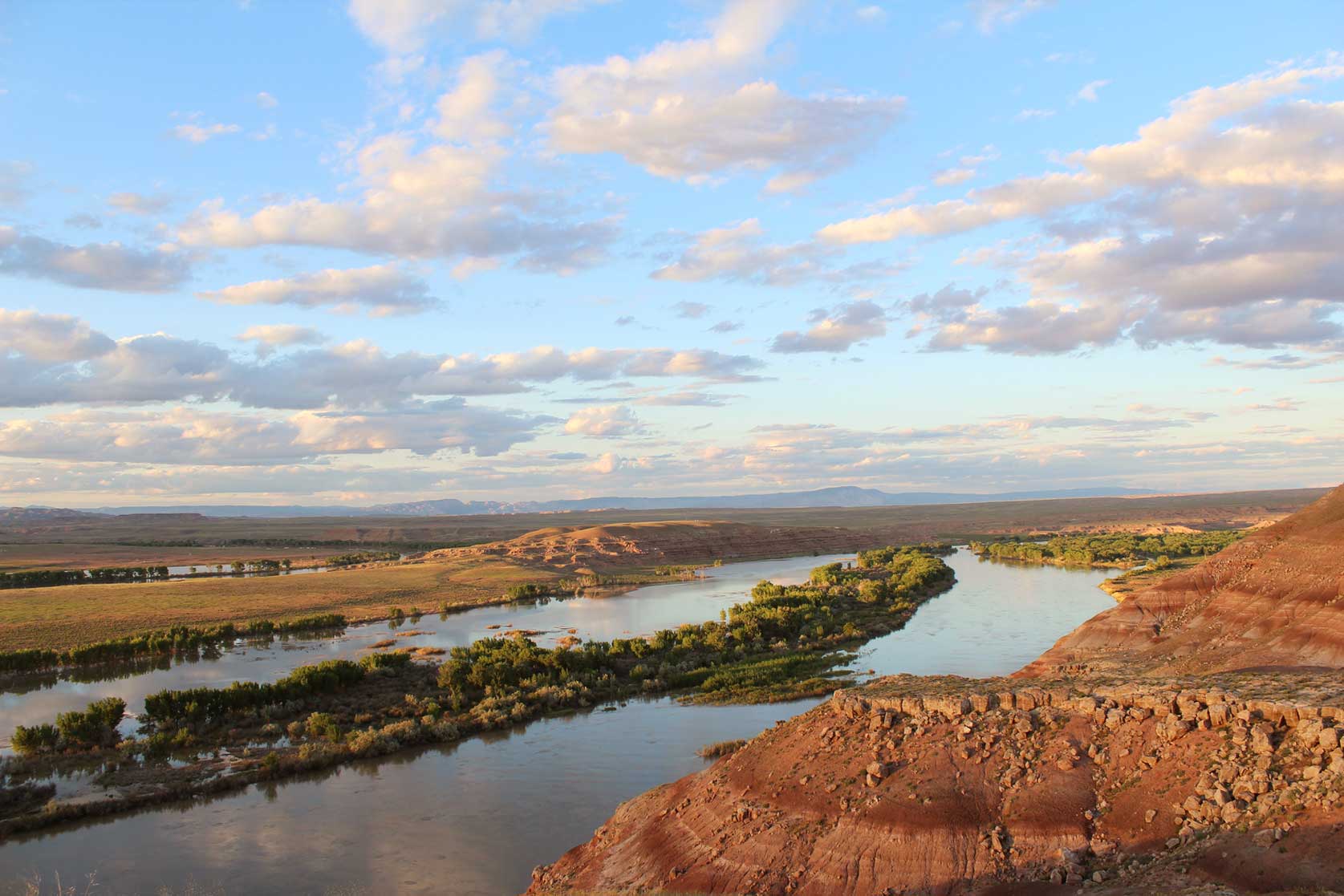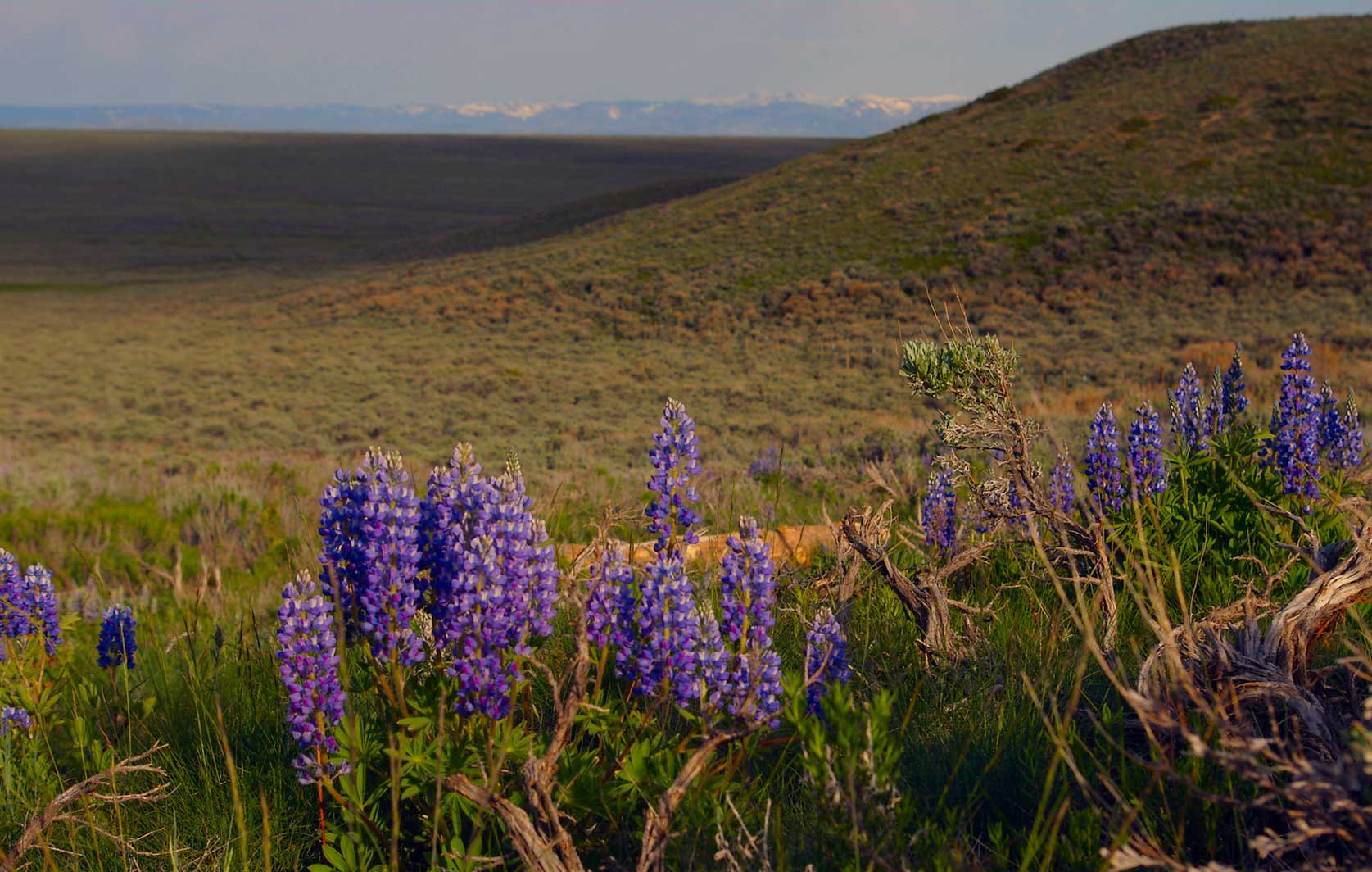- Home
-
Welcome to Region 6

The Mountain-Prairie Region consists of 8 states in the heart of the American west including Colorado, Kansas, Montana, Nebraska, North Dakota, South Dakota, Utah and Wyoming.
- About Us
- Contact Us
- Regional Leadership
- FOIA Reading Room
- USFWS FOIA
-
-
Science
-
Science

The U.S. Fish and Wildlife Service has a long tradition of scientific excellence and always uses the best-available science to inform its work to conserve fish, wildlife, plants, and their habitat for the benefit of the American public.
- Climate Change
- Landscape Conservation
- Peer Review
- Surrogate Species
- Greater Sage Grouse Research
- Contact Us
-
- Refuges
-
National Wildlife Refuges

Where Wildlife Comes First
Created in 1903 by President Theodore Roosevelt, today's National Wildlife Refuge System protects habitats and wildlife across the country, from the Alaskan tundra to subtropical wetlands. Managed by the U.S. Fish and Wildlife Service, the Refuge System's 560-plus refuges cover more than 150 million acres and protect nearly 1,400 species of birds, mammals, reptiles, amphibians, and fish.
While national wildlife refuges were created to protect wildlife, they are for people too. Refuges are ideal places for people of all ages to explore and connect with the natural world. We invite you to learn more about and visit the national wildlife refuges and wetland management districts in Colorado, Kansas, Montana, Nebraska, North Dakota, South Dakota, Utah, and Wyoming.
- Visit a Refuge or District
- Cultural Resources
- Fire Management
- Refuge Planning
- Realty
- Habitat and Population Evaluation Team (HAPET)
- Biological Resources
- Law Enforcement
- Partners for Fish and Wildlife
-
- Ecological Services
-
Ecological Services

The Mountain-Prairie Region's Office of Ecological Services (ES) works to restore and protect healthy populations of fish, wildlife, and plants and the environments upon which they depend. Using the best available science, ES personnel work with Federal, State, Tribal, local, and non-profit stakeholders, as well as private land owners, to avoid, minimize, and mitigate threats to our Nation's natural resources.
- Field Offices »
- Endangered Species
- Energy
- Environmental Contaminants
- Natural Resource Damage Assessment & Restoration
- National Wetlands Inventory
- Conservation Planning
- Contact Us
-
- Migratory Birds
-
Migratory Birds

Providing leadership in the conservation of migratory bird habitat through partnerships, grants, and outreach for present and future generations. The Migratory Bird Program is responsible for maintaining healthy migratory bird populations for the benefit of the American people.
- Regional Priority Species
- Focal Species
- Duck Stamps
- Migratory Bird Treaty Centennial
- Joint Ventures
- Permits
- WSFR
-
- Fish & Aquatic
-
Fish and Aquatic Conservation

The U.S. Fish & Wildlife Service Fish and Aquatic Conservation Program in the Mountain-Prairie Region helps conserve, protect, and enhance aquatic resources and provides economically valuable recreational fishing to anglers across the country. The program comprises 12 National Fish Hatcheries.
- Home
- Offices & Hatcheries
- Fish & Aquatic Species
- Aquatic Invasive Species
- Programs
- Resources
- Contact Us
-
- Law Enforcement
-
Law Enforcement

Law enforcement is essential to virtually every aspect of wildlife conservation. The Office of Law Enforcement contributes to Service efforts to manage ecosystems, save endangered species, conserve migratory birds, preserve wildlife habitat, restore fisheries, combat invasive species, and promote international wildlife conservation.
- Laws Enforced
- Import/Exports
- Permits
- OLE Regional Offices
- OLE National HQ
- Contact Us
-
- External Affairs
-
External Affairs

External Affairs staff in the Mountain-Prairie Region of the U.S. Fish and Wildlife Service provides support to the regional office and field stations to communicate and faciliate information about the Service's programs to the public, media, Congress, Tribes, partners, and other stakeholders in the 8-state region.
- News & Releases
- Campaigns
- Social Media
- Tribal
- Fact Sheets
- Imagery
- Contact Us
-
About Us
Jump to a section: Latest news

PHOT CREDIT: FWS
The Nebraska Field Office is one of the oldest Ecological Services field offices in the U.S. Fish and Wildlife Service, established in 1948 as part of the Missouri River Basin Studies. The Nebraska Field Office provides biological advice to other federal and state agencies, industry, and members of the public concerning the conservation of fish and wildlife and their habitats. Conservation activities include protecting federally threatened and endangered species and their ecosystems, providing recommendations for ways to avoid, minimize, or compensate for harmful impacts to fish and wildlife resources and their habitats, and investigating the effects of contaminants on fish and wildlife.
News Release:Service Protects Northern Long-eared Bat as Threatened Species under Endangered Species Act with Interim 4(d) Rule The northern long-eared bat is one of the species of bats most impacted by the disease white-nose syndrome. Due to declines caused by white-nose syndrome as well as continued spread of the disease, the northern long-eared bat will now receive protection as a threatened species under the Endangered Species Act.
The Service proposed the northern long-eared bat as endangered in October 2013. During review of the threats, we determined the northern long-eared bat meets the Endangered Species Act's definition of threatened. Under the Act, a threatened species is likely to become endangered in the foreseeable future, while an endangered species is currently in danger of becoming extinct.
The listing becomes effective on May 4, 2015, 30 days after publication of the final listing determination in the Federal Register.
Also effective May 4 is an interim 4(d) rule that provides flexibility to landowners, land managers, government agencies and others as they conduct activities in northern long-eared bat habitat. Given the significant number of comments received in response to the 4(d) rule as proposed on January 15, 2015, we also opened a 90-day comment and will accept further input on the interim rule through July 1, 2015. Learn more >>>
News Release: Service Protects Red Knot as Threatened Species under Endangered Species Act - The rufa subspecies of the red knot now will receive protection as a threatened species under the Endangered Species Act, the Service announced today. “Unfortunately, this hearty shorebird is no match for the widespread effects of emerging challenges like climate change and coastal development, coupled with the historic impacts of horseshoe crab overharvesting, which have sharply reduced its population in recent decades,” said Service Director Dan Ashe. Learn more >>>
UPDATE November 18, 2014: U.S. Fish and Wildlife Service Reopens Comment Period
On Proposal to List the Northern Long-eared Bat as Endangered
The U.S. Fish and Wildlife Service is reopening the public comment period on a proposal to list the northern long-eared bat as endangered under the Endangered Species Act (ESA). Comments will be accepted through Dec. 18, 2014. The Service is reopening the comment period to alert the public to additional information provided by state conservation agencies within the range of the species. The Service will consider this information, and all information received previously, while determining whether the northern long-eared bat warrants listing under the Endangered Species Act. Reopening of the comment period will allow the public to provide comments on the proposed rule in light of that additional information. A final decision on the proposal is due on April 2, 2015. Read more>>>
UPDATE June 30, 2014: Six-month Extension and Comment Period Re-opens
A notice for a six-month extension for the final listing determination on the northern long-eared bat published in the Federal Register on June 30, 2014. We are also reopening the comment period on the proposal to list the bat as endangered; the 60-day comment period ends on August 29, 2014. A final decision on listing the northern long-eared bat will be made no later than April 2, 2015.
News Release (June 30, 2014): Service Reopens Comment Period on Proposal to List the Northern Long-eared Bat as an Endangered Species
Questions and Answers: Six-Month Extension of Final Determination and Re-opening Comment Period on the Proposal to List Northern Long-eared Bat as Endangered
Federal Register (June 30, 2014): 6-Month Extension of Final Determination on the Proposed Endangered Status for the Northern Long-Eared Bat
Landmark Study Reveals Low National Rate of Frog Abnormalities on Wildlife Refuges. An unprecedented 10-year-study by the U.S. Fish and Wildlife Service (Service) shows encouraging results for frogs and toads on national wildlife refuges. The study, published today in the peer-reviewed online journal PLOS ONE, finds that on average, less than 2 percent of frogs and toads sampled on 152 refuges had physical abnormalities involving the skeleton and eyes – a lower rate than many experts feared based on earlier reports. This indicates that the severe malformations such as missing or extra limbs repeatedly reported in the media during the mid-1990s were actually very rare on national wildlife refuges.
To view the journal article, please click here. The complete dataset from the study is being made available online at the Dryad Digital Repository (http://doi.org/10.5061/dryad.dc25r ) to facilitate future research to aid in the conservation of amphibians and their habitats.
U.S. Fish and Wildlife Service Proposes to Revise Critical Habitat for the Salt Creek Tiger Beetle: The U.S. Fish and Wildlife Service (Service) is seeking public input on a proposed revision of critical habitat for the rare Salt Creek tiger beetle (Cicindela nevadica lincolniana), listed as endangered in 2005 under the Endangered Species Act (ESA). While only a few hundred beetles remain in three small populations in Nebraska on less than 35 acres, this revision will guide conservation efforts for the species, which includes proposed critical habitat for 1,110 acres of saline wetlands. A copy of the proposed rule and more information on how to submit comments can be found at http://www.fws.gov/mountain-prairie/species/invertebrates/saltcreektiger/index.htm
Check out our free resources for educators, after school coordinators, scout groups and others!
We have Education Trunks available for use in schools, nature centers, libraries and other informal settings. Pick-up and drop-off trunks at the U.S. Fish and Wildlife Service Office, 203 W. 2nd St. Grand Island, NE. Trunks can be checked out for a period of two weeks and can be reserved by calling 308-382-6468 ext 14. or email jeanine_lackey@fws.gov.
We also have a "Wildlife for Trade" trunk that can be checked out for a period of 4-6 weeks. This trunk comes with an Educator's guide to discussing the impacts of wildlife trade in a "classroom setting" and confiscated items from the illegal wildlife trade
Bridges to Birding Kits Available now!!!
Bridges to Birding is a program designed to facilitate bird awareness and connect students & educators with the outdoors and the native birds found in Nebraska. Nine birding kits are available for check-out throughout Nebraska. Click here for more information or call Jeanine Lackey at 308-382-6468 x14.
Osprey and Energy Infrastructure Conflicts in Nebraska. The USFWS and NGPC have developed a Guidance Document to ensure that problematic Osprey nests are recognized and managed in a proactive, consistent and lawful manner in Nebraska. Ospreys benefit from the presence of power lines by using distribution poles and transmission structures for nesting. However, the bulky nests often cause power outages when sticks interfere with electrical equipment. The guidelines are intended to inform managers of regulations and protocols for addressing problematic osprey nest situations: they are not regulatory in themselves and they are not intended to supplant onsite review or consultation. Avoiding Osprey and Energy Infrastructure Conflicts: Information and Resources for UtilitiesVersion
Department of the Interior
USA.gov
About the U.S. Fish and Wildlife Service
Accessibility
Privacy
Notices
Disclaimer
FOIA

















